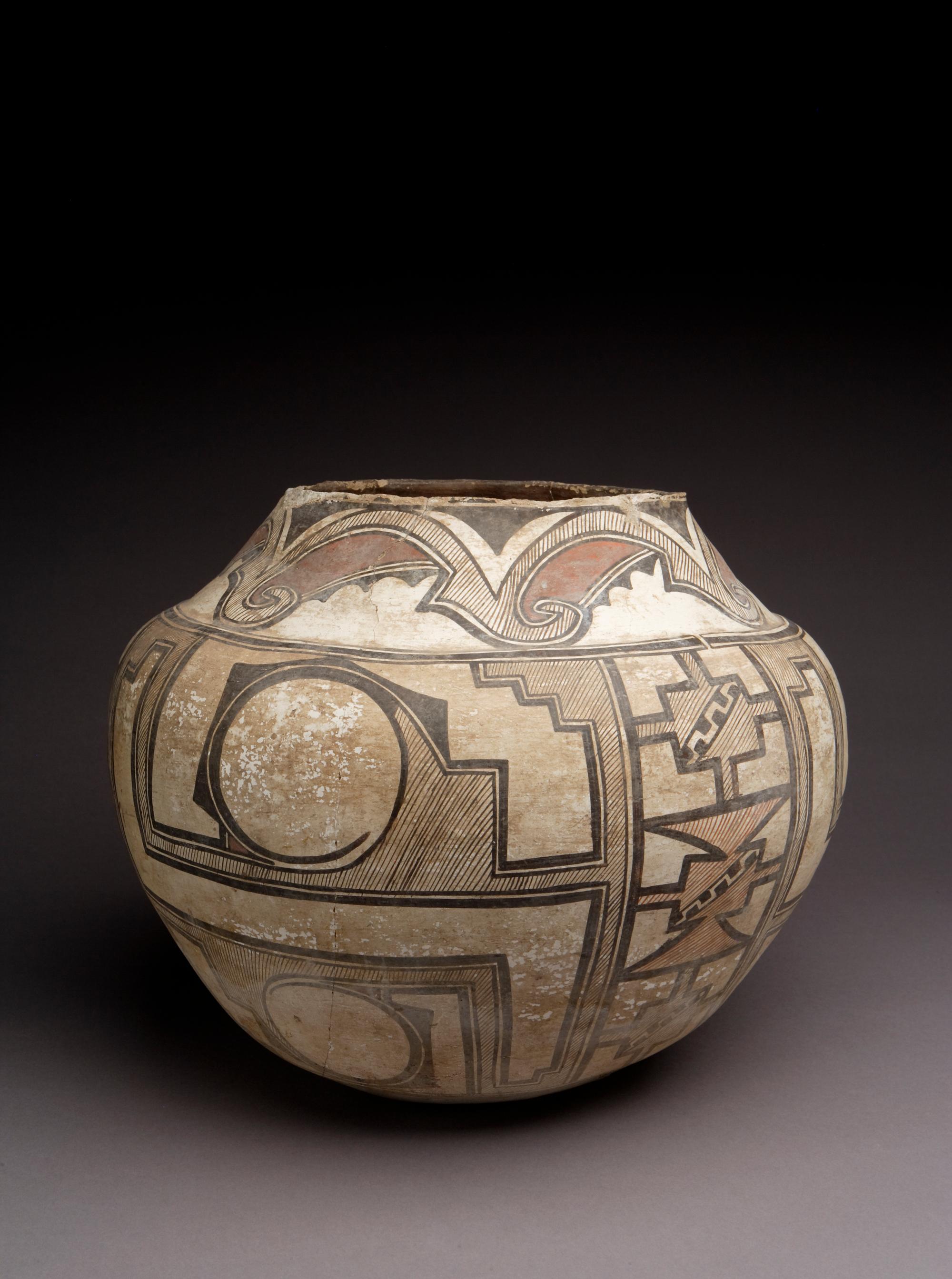
Photograph by Addison Doty. Copyright 2010 SAR.
Water jar | K'yabokya de'ele
Date: c. 1890
Artist or Maker: Unknown
Dimensions:
33 × 39.4 cm (13 × 15 1/2 in.)
Weight: 4.6 kg (10.25 lb.)
Medium: clay | paints
Place Made:
Zuni Pueblo, McKinley County, New Mexico, Southwest, United States, North America
Object Number: IAF.1877
Not on view
Tribal Collection Review RemarksJim Enote and Octavius Seowtewa during collection review visit December 7 and 8, 2010 (Events Record “Collection Review: Zuni Tribe, Review 5”): The rim has some erosion, but mostly on one side. The rim is painted black. The neck designs are water waves, bird tails (the red and black portions of the design), and rain hatching. There is a triple border line (the middle one is thick) with a line break between the neck and body designs. The body designs are contained inside six houses (compartments or panels). The three wider houses each contain two birds filled with rain hatching, so there are six birds total. The three narrow houses contain cloud and bird tail designs, filled with rain hatching and dots that may represent hail/seeds/planting holes. The jar is quite heavy for its size.
The word for a water jar in Zuni is “k'yabokya,” which translates to “water container” in English. The intended use for these jars was to store and carry water, but they could also be used to store other items.
In Collection(s)
Bibliography:
Pueblo Designs
- Pg. 33; 37
- Fig. Plate VIII, 1; Plate X, 4
The Indian Arts Research Center, in collaboration with Native American community scholars, strives to present accurate collections records. Records may be updated as new information becomes available and is reviewed with the Native American community having cultural affinity to particular items. Please write to iarc@sarsf.org if you have questions or concerns related to the documentation.
